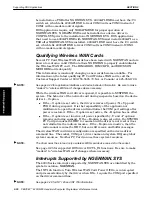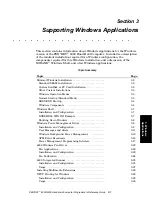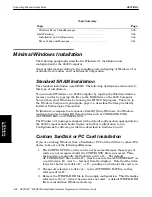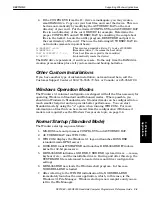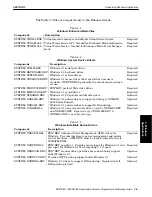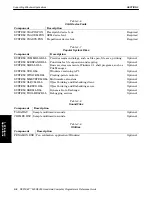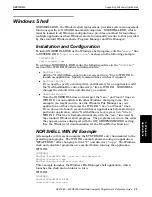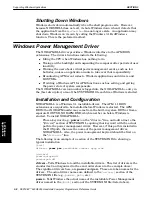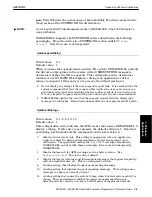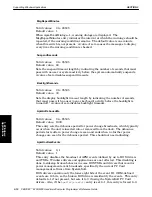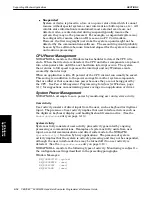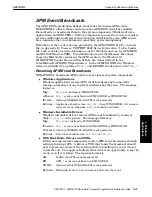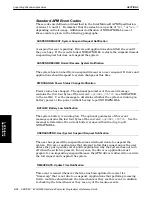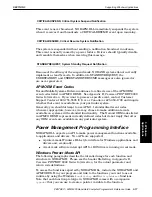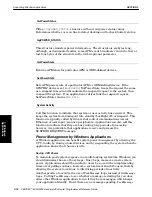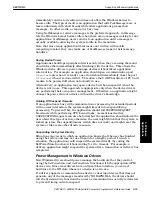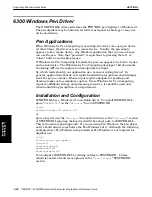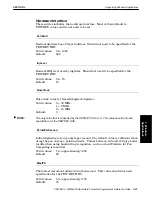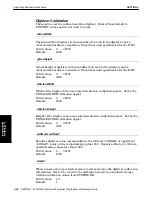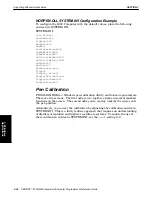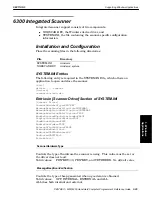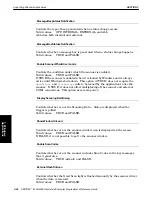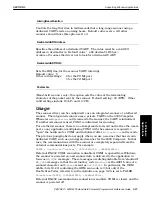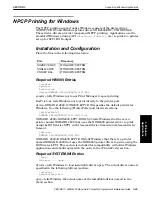
SECTION 3
Supporting Windows Applications
3-14 PEN*KEY
R
6200/6300 Hand-Held Computer Programmer’s Reference Guide
"
Suspended
System or device is placed in a lowĆ or noĆpower state from which it cannot
resume without special system or user intervention (button press, etc.). All
volatile state information is maintained; most external events are not
detected. Also, events detected during suspend typically resume the
system; they may not be processed. For example, a suspended system may
be configured to resume when an RI is seen on a PC Card modem.
However, the first ring might just wake the system up and might not be
detected by the communications software. The second ring would probably
be seen by the software because time had elapsed for the system to resume
and continue processing.
CPU Power Management
NORAPM.DLL monitors the Windows task scheduler to detect the CPU idle
state. When the idle state is detected, the CPU and other components are placed
into a lowĆpower state until the next hardware interrupt occurs. The system
then returns to full speed to process the interrupt and any Windows events
created by the interrupt.
When an application is idle, 95 percent of the CPU current can usually be saved.
This saving is in addition to the power savings from other system components
that are idled or that consume less power because they are not being gated by
the CPU. See
Power Management Programming Interface for Windows
, page
3Ć17, for suggestions on maximizing power savings in an application or driver.
System Power Management
NORAPM.DLL attempts to save power by monitoring
user
and
system activity
.
User Activity
User activity consists of direct input from the user, such as keyboard or digitizer
input. The presence of user activity implies that user interface devices such as
the digitizer, keyboard, display, and backlight should remain active. (See the
BacklightSeconds
entry on page 3Ć10.)
System Activity
System activity consists of user activity plus activity generated by ongoing
processing or communications. Examples of system activity, aside from user
input, are serial communications and direct calls made to the NORAPM
SystemActivity()
function by busy applications. The presence of system
activity implies that the system is actively processing and may not be suspended,
although the user interface devices may be turned off if no user activity is
detected. (See the
SuspendSeconds
entry on page 3Ć10.)
NORAPM.DLL monitors the following types of activity. Monitoring is subject to
the configuration settings described in the preceding paragraphs.
Window Messages:
WM_COMMNOTIFY (system)
WM_MOUSEMOVE
(user)
WM_RCRESULT
(user)
WM_KEYDOWN
(user)
3. Windows
Applications

